Last week during the ICOLD General Assembly in Gothenburg, the questions for the next ICOLD Congress in 2025 in Chengdu (China) were voted. You can see the wording of the four questions, including sub-questions in the following pictures; levees have a large place and great visibility. This is a great success for ICOLD TC LE and EUCOLD LFD WG. We will be able to share levee related knowledge within all ICOLD, not only within our TC and WG.
You can now prepare yourselves to submit levees related papers. For those of you who are not familiar with ICOLD Congresses, the process is not the same as a typical conference. Papers are not submitted by authors directly to ICOLD, but through national committees. Each national committee has its own selection process before sending them to ICOLD where they are then automatically accepted, as long as the national committee does not exceeds its quota. So get in touch with your national committee to know the details for submitting an abstract / a paper.
Some comments about the questions and sub-questions:
Q1 : this question does not explicitly include levees, but nonetheess levees are definitely to consider when dealing with climate change in terms of river floods and coastal inundations. I think that anyway in Q1.2 it is possible to include levees. Maybe also Q1.5 as I know about some projects of having solar panels on levees, or close to them.
Q2 : levees are explicitly in the title of the question, great success there, although it is a little surprising that then there is a Q1.3 with “special case of small dams and levees”.
Q3 : levees are also explicitly in the title of the question, and they are not singled out from the dams, so even a bigger success
Q4 : levees are not mentioned in this question title, but they are in subquestion Q4.2. There may not be many case studies to present there, although the few known cases are probably very interesting to learn from. I had a discussion in Gothenburtg with Martin Weyland (chair of TC on “seismic aspects of dams design”) and he told me that one of the most catastrophic failures after an earthquake followed by a flood was on a levee. This case, as maybe others, is very interesting to learn from.
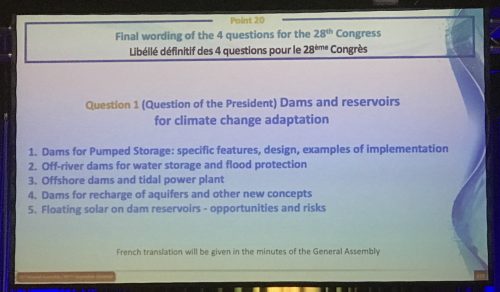
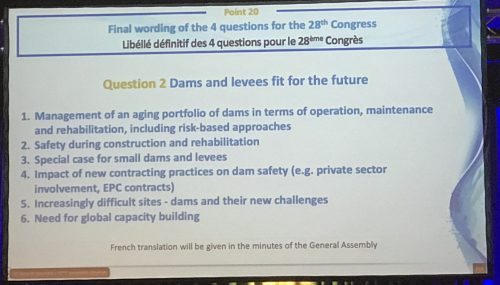
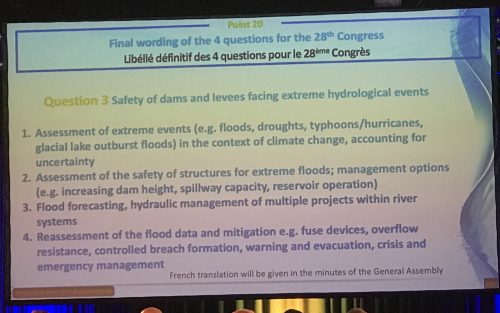
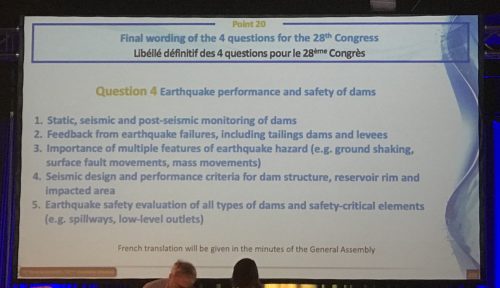







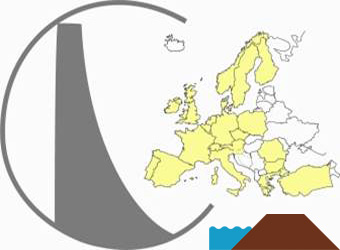

Recent Comments